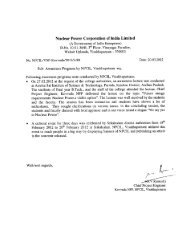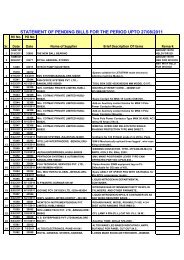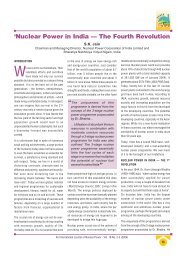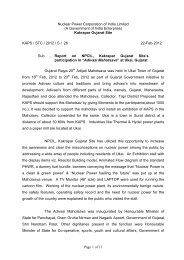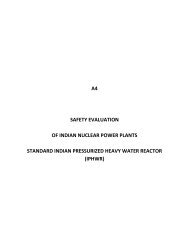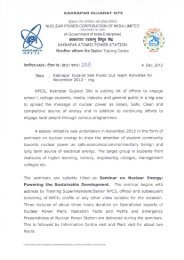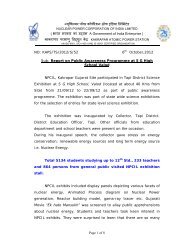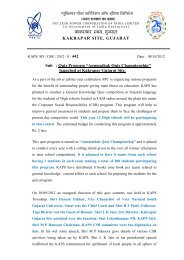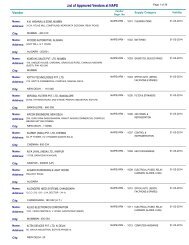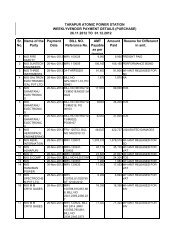NPCIL Corporate Profile - Nuclear Power Corporation of India Limited
NPCIL Corporate Profile - Nuclear Power Corporation of India Limited
NPCIL Corporate Profile - Nuclear Power Corporation of India Limited
Create successful ePaper yourself
Turn your PDF publications into a flip-book with our unique Google optimized e-Paper software.
5<br />
N P C I L<br />
ISO-14001 and IS-18001 Certification:<br />
All the nuclear power stations namely Narora, Kakrapar, Tarapur, Kalpakkam, Rajasthan and Kaiga have been<br />
certified for ISO-14001 (Environment Management System) and IS-18001 (Occupational Health and Safety<br />
Management System).<br />
This certification provides for :<br />
� Compliance with applicable environmental legislation and regulations along with a commitment for continual<br />
improvement.<br />
� Improved corporate commitment to environmental protection and conservation <strong>of</strong> resources.<br />
Typical ESL at one <strong>of</strong> the <strong>Nuclear</strong> <strong>Power</strong> Plants <strong>of</strong> <strong>NPCIL</strong><br />
10.15<br />
39.60<br />
3.12<br />
0.42<br />
0.75<br />
1.47<br />
1000<br />
2400<br />
0<br />
TAPS RAPS MAPS NAPS KAPS KGS AERB Natural<br />
LIMIT Average<br />
2500<br />
2000<br />
1500<br />
1000<br />
Average Radiation Dose from NPPs at 1.6 Km for Year (2010)<br />
500<br />
Dose Micro Sievert/year (µSv/y)<br />
Ensuring Environmental<br />
Protection<br />
Protection <strong>of</strong> the plant personnel, the<br />
environment and the public is an important<br />
consideration in the design, construction and<br />
operation <strong>of</strong> the nuclear power stations. The<br />
radiation source is adequately shielded, monitored<br />
in all operation and constantly maintenance works<br />
on the active systems are carried out strictly<br />
according to approved procedures.<br />
The release <strong>of</strong> radioctivity to the environment<br />
from nuclear power stations is in very small<br />
quantities, in any case well within the limits<br />
stipulated by the Atomic Energy Regulatory Board<br />
(AERB). The radiation dose due to actual releases is<br />
insignificant compared to the dose that from the<br />
natural radiation background. A person living at the<br />
fence post <strong>of</strong> a nuclear power station receives a<br />
radiation dose in 20 years equivalent to the radiation<br />
dose <strong>of</strong> a single chest X-ray indicating the adequacy<br />
<strong>of</strong> radiation control in nuclear power plants.<br />
It is interesting to compare the radiation<br />
exposures resulting from the operation <strong>of</strong> a nuclear<br />
power plant in <strong>India</strong> to the unavoidable natural<br />
background radiation exposure. Detailed surveys<br />
have shown that normal natural background<br />
radiation in different parts <strong>of</strong> the country varies from





